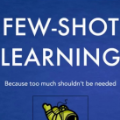Many meta-learning methods are proposed for few-shot detection. However, previous most methods have two main problems, poor detection APs, and strong bias because of imbalance datasets. Previous works mainly alleviate these issues by additional datasets, multi-relation attention mechanisms and sub-modules. However, they require more cost. In this work, for meta-learning, we find that the main challenges focus on related or irrelevant semantic features between different categories, and poor distribution of category-based meta-features. Therefore, we propose a Top-C classification loss (i.e. TCL-C) for classification task and a category-based grouping mechanism. The TCL exploits true-label and the most similar class to improve detection performance on few-shot classes. According to appearance and environment, the category-based grouping mechanism groups categories into different groupings to make similar semantic features more compact for different categories, alleviating the strong bias problem and further improving detection APs. The whole training consists of the base model and the fine-tuning phase. During training detection model, the category-related meta-features are regarded as the weights to convolve dynamically, exploiting the meta-features with a shared distribution between categories within a group to improve the detection performance. According to grouping mechanism, we group the meta-features vectors, so that the distribution difference between groups is obvious, and the one within each group is less. Extensive experiments on Pascal VOC dataset demonstrate that ours which combines the TCL with category-based grouping significantly outperforms previous state-of-the-art methods for few-shot detection. Compared with previous competitive baseline, ours improves detection AP by almost 4% for few-shot detection.
翻译:然而,以往多数方法都提出了两大问题,即检测不良的AP-C, 以及不平衡的数据集导致的强烈偏差。先前的工作主要通过增加数据集、多关系关注机制和子模块来缓解这些问题。然而,它们需要更高的成本。在这项工作中,为元学习,我们发现主要挑战侧重于不同类别之间的相关或不相关的语义特征,以及基于分类的元功能分布不善。因此,我们建议对分类任务和基于分类的分组机制采用高C分类损失(即,TCL-C) 。过去的工作主要通过增加数据集、多关系关注机制和子模块来缓解这些问题。但是,它们需要花费更多的费用。在元学习方面,我们发现主要挑战侧重于不同类别之间的相关或不相关的语义特征,以及基于分类的元性特征分布不善。因此,我们为基础模型和基于分类的读数级分类分类(即TCL-C-C)和基于分类的分组分类分类分类的分类损失。在培训中,与分类相关的元元数据测试和最相似的类别中,我们利用了一种分级的分级的分级的分级 。





